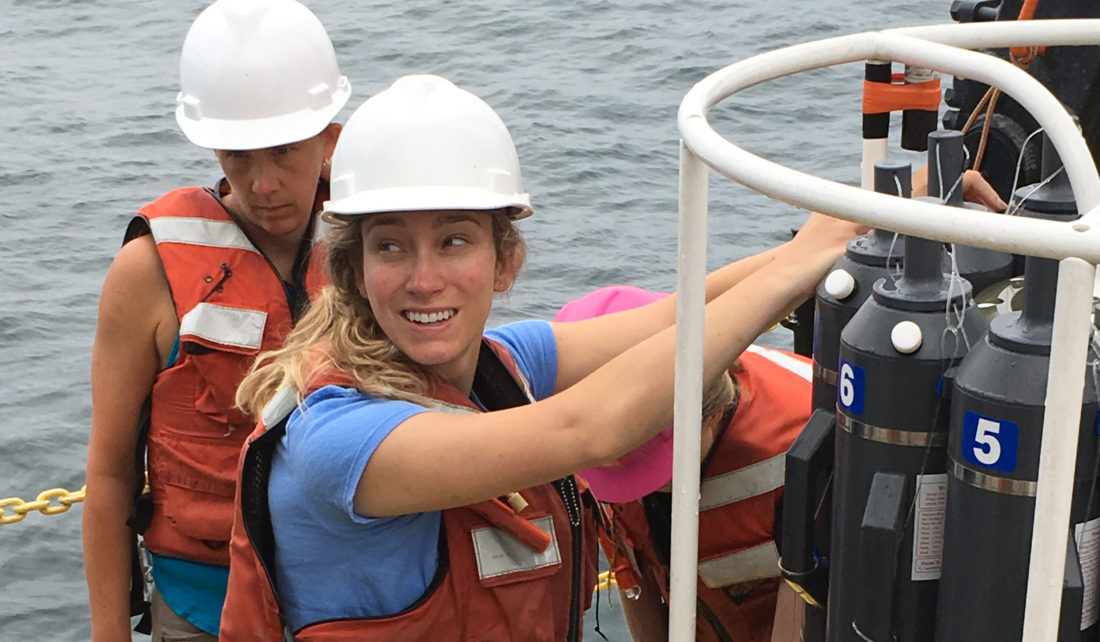
Each summer on one of the Great Lakes, 15 educators set sail for a week on the Lake Guardian, an Environmental Protection Agency research vessel, where they work side by side with scientists and fellow educators, growing their knowledge and confidence in bringing Great Lakes science to their students.
The Shipboard Science Workshop is the centerpiece project of the Center for Great Lakes Literacy, a collaborative of education specialists from Sea Grant programs in the region and funded through the Great Lakes Restoration Initiative. Since 2006, 207 educators have taken part in this adventure.
The hands-on, immersive nature of this experience fosters a broader and deeper understanding of science—the educators onboard are developing research skills as they engage in real world scientific investigation. They also expand their “treasure box” of lessons, teaching strategies, and network of like-minded colleagues. Participants of the workshops have described them as once-in-a-lifetime professional development opportunities.
Educators from every Great Lake state described how participating in the Shipboard Science Workshop has impacted them and their students. You can read their experiences in a new story map: Educators Onboard for Learning.

